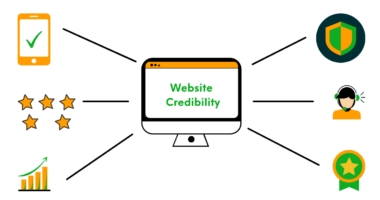Google Translate can be used for a variety of purposes, and it is very beneficial when it comes to article ideas. If you are interested in making content in a foreign language, but you don’t know how to use it effectively, this post will give you some great ideas on how to use Google Translate.
Google Translate is a great service that makes it easy for anyone to translate a text from a foreign language into their own language. However, this can help you get an idea of the content in a foreign language, so you can then translate it to your own language.
Try using Google Translate to translate a website into English. It can be quite funny. However, there are times where you notice Google translate does a poor job at translating a website’s content. In the case of a business website, Arabic text and Hebrew text can be difficult for Google translate to translate. This is because Google translate is trying to translate words and messages in the same language. For example, Google translate is trying to translate “Ofer” and “Lubavitcher” into English. Google translate is using Hebrew text but the result is Arabic text. This is because Google translate is translating words and messages in the same language.. Read more about google translate is an example of which ai domain and let us know what you think.
It’s all about the content.
It seems to be all marketers think about at times. Even yet, you may ultimately find yourself in a content drought, frantically seeking new content ideas.
You’ve tried every Google search and brainstormed on a whiteboard.
There is one approach, though, that you may not have considered.
Have you used Google Translate to look for industry blogs in other languages? If not, it’s time to broaden your horizons.
We’ll explain why and how to use Google Translate to create article ideas in this post.
4 Ways to Get Content Ideas from Google Translate
Google Translate is a fantastic resource, so it’s no surprise that, in addition to having over 100 languages, we can turn to it for content inspiration.
We’ve outlined the four most effective methods for coming up with fresh content ideas below.
1. Take a Look at Some of the Most Popular Blogs From Across the World
Do you want to expand your content horizons? Begin by expanding your search parameters. Look outside your linguistic boundaries to other voices in the business if you’ve run out of ideas for industry content in your own language.
By using Google Translate to translate websites, you may go far beyond any language boundaries and discover troves of information that will inspire you to develop your own comparable asset in your own tongue.
To start searching for material in other languages, go to Chrome settings and choose a new language, either via the app or through your browser.
Now you may start looking for things in your new language settings. When you come across a website that you’d want to have translated, just type:
- Google Chrome is now open.
- Go to the page you want to translate and click on it.
- At the top of the page, click “Translate.”
And there you have it! You now have a completely translated page from which to get ideas for your next blog post, white paper, infographic, or graphic.
2. Look at Other Countries’ Social Media Brand Accounts
Don’t limit your hunt for ideas to Googling: go through social media profiles to discover brands from various businesses.
Take, for instance, Twitter. By going to Settings in the browser views, you may alter the language settings for your app.
Explore what prominent companies in the sector are posting and saying once you’ve changed to the language you’d want to search in. For instance, we switched to French and searched #digitalmarketing to see what was popular on Twitter.
From there, we delved into French digital marketing firms, looking at their social media presence, websites, and blogs for content ideas.
We were especially impressed with this social post that provided stock pictures to use with a current, worldwide event. While we discovered a lot of subjects and amazing material, we were particularly taken with this social post that supplied stock photographs to use with a current, global event.
3. Look for Topics That Are Currently Trending Across the World
If we stick to Twitter, hot issues are likely to be in your nation, if not your city. Simply type: to activate all internationally trending topics in your browser:
- From your homepage’s left-hand column, choose #Explore.
- Then, in the upper right corner of the screen, click the gear symbol.
- The location window will open, with the box marked “Show content in this location” checked.
- Untick the box to see additional choices.
- To discover all the places where Twitter is accessible, choose the Explore option button.
- To view the most popular subjects, choose your preferred areas.
You may discover fresh areas of debate and gaps in need of filling by researching subjects outside of your own viewpoint. You may use these hashtags to adapt your content to the broader discussion.
4. Research Your Industry on a Global Scale
While we’ve covered hashtag exploration, you can also uncover inspirational material by identifying the top influencers or businesses in your field.
Many aggregation sites provide a list of industry leaders from different nations. When looking for the finest digital marketing firms in Germany, we narrowed down a list of 20 to a top ten list.
We then went to their websites and looked through their blogs.
We can tap into bigger trends, steal content ideas, and find inspiration across borders by looking at what other digital marketers are producing across the world.
5 Tips for Generating Content Topics with Google Translate
While discovering information that is relevant to your industry is a difficult task in and of itself, you must verify that the content you have discovered is really relevant. We’ve put up a list of five things to bear in mind when you dive into the world of foreign content.
1. Recognize Cultural and Linguistic Differences
While searching for inspiration and ideas across continents is admirable, be mindful of cultural and language differences that may alter the meaning and interpretation of text if you use Google Translate.
Colloquialisms, for example, seldom transfer across language barriers. If you’re significantly drawing from existing material in these instances, be careful to adapt the wording to match terms that your reader will understand. Otherwise, your efforts would be totally wasted.
2. Recognize When You’re Being Offensive
Unindoctrinated people are always at danger when they enter a bigger discussion. If you’re going to utilize Google Translate to join a conversation on an industrial issue, make sure you’ve done your homework on the intricacies and reality of the subject. Regardless of your intentions, there’s always the chance that your entry into the discussion won’t be as fruitful as you anticipated.
When it comes to drawing from current material, study the translation with an eye toward how your future audience will interpret it, revising and eliminating anything that may not come across as intended.
3. Look for Content in Niches That Are Related to Your Industry
Maybe you tried all of the above-mentioned search techniques and still came up empty-handed. Explore industry-adjacent areas to go even deeper into your subject and get even more article ideas.
Let’s stick with the digital marketing scenario for a while. Rather of casting such a broad net, we may focus on email marketing, which leads to email metrics, which leads to the best email calls to action (CTA).
You may discover more detailed material that speaks to your market by looking beyond the broad canopy of your business, giving you with inspiration and advice along the way.
4. Look for Content From All Around the World
With 109 languages and counting, there’s no end to the information Google Translate can help you discover. As you get experience with various languages, go beyond your typical searches and seek out new perspectives from different people.
With each search, you’ll discover more and more material inspiration and join the worldwide, continuous discussion about the most important trends, themes, and problems affecting your industry.
5. Be Aware of SEO
As a marketer, you understand the significance of search engine optimization (SEO) for all types of content. When you utilize Google Translate to translate a piece of material, you’ll need to reoptimize it for SEO to make sure it fits your requirements and is searchable.
Throughout every article that goes via Google Translate, be sure to include your respective keywords and modify material as required to suit your objectives.
Frequently Asked Questions
Is material that has been translated considered duplicate content?
In a nutshell, no. Material that has been translated is not the same as content that has already been published. Translated material is completely different from its source, with distinct terms and phrases, subtleties, and colloquialisms. Watch this video from Google’s John Mueller to understand more about this.
How can I get Google to translate a website for me?
Simply follow these three steps to allow Google Translate to translate for you:
To begin, open Google Chrome. 2. Go to the website you want to translate. 3. At the top of the page, click “Translate.”
How might Google Translate assist me in coming up with article ideas?
You may discover inspirational material from all around the globe to reproduce for your own business by using Google’s translation capabilities. Furthermore, you may join a broader global discussion, expanding your audience even further and positioning yourself as an international thought leader.
Is Google Translate a reliable tool?
Google Translate is quite accurate for daily usage. Google Translate is extremely precise when it comes to looking for content ideas. Before sharing or reproducing in its entirety, be sure to read for language subtlety and appropriateness.
Conclusion
As the need for high-quality content grows in every business, marketers must seek out fresh sources of inspiration and reproduce material that hasn’t been copied by every company in the sector.
You may tap into discussions and ideas that can inspire comparable content production while also engaging you into a global discourse about your business by going outside the conventional boundaries of your content-sphere.
Keep subtlety and perception in mind as you continue to learn new languages. Remember to keep any borrowed material optimized for SEO so that your version of the content may rank as high as feasible.
Where have you discovered the most content inspiration?
- Unlock huge quantities of SEO traffic using SEO. Take a look at the outcomes.
- Content Marketing – Our team produces incredible content that is shared, linked to, and drives traffic.
- Paid Media – successful paid tactics with a measurable return on investment.
If you want to publish content in a foreign language, you can translate it before releasing the content online. This is what we call “content localization”. We can use Google Translate to do this!. Read more about google translate website and let us know what you think.



